So instead, I'm just going to post pictures of weapons by category, and describe some of my criteria for these classifications. Some images are from museums, others are faithful replicas from merchant websites. (I love you, kultofathena.com)

And it did need cleaning up. Are you kidding me, rapier?
The weirdness goes back to Gygax and Chainmail and beyond. But atleast with Chainmail, Gary was trying to represent his subject realistically. He just didn't have the best sources to draw on, and the SCA was still a small club in Berkley at the time.
I think it's important that weaponry be accurately represented in our games. Some will surely protest that D&D is a fantasy game, so orc double-axes and crap like that should be encouraged. Well that's just wrong. Suppose someone wanted to play in a genuine historical setting, or include representative medieval or melee weapons in a modern setting. Besides, for some people, roleplaying games are the gateway into genuine historical interests, and it does not serve them to be utterly fictional where it is not called for.
Besides, unless you are creating a whole history of weaponry and warfare for an alien world from scratch, I guarantee that the truth will be much stranger and more compelling than fiction.
Pre-modern-ness supposes that weapons are hand-made. Proficient smiths had methods and tools for ensuring consistency and proportion in their work, and perhaps a distinctive style. But each weapon was an individual. Extant historical pieces only scratch the surface of the variety which there was, because the really useful, popular weapons tended to get used up!
As is, the existing category of weapons holds up pretty well for rules purposes and for creating distinct tactical choices. I want to explore some of the variation in these categories, and possibly describe how I define their criteria.
Daggers
dirks, stilettos, shivs, bowie knives, Arkansas toothpicks, tanto, survival knives, trench-knives, poigniards, bayonettes, misericords, athames and shaftless spear-heads. If it is designed for hard-use or for combat, it counts as a dagger. (even if it is technically a knife.) If it is a smaller blades (less than 5 inches) and meant for mundane or utilitarian purposes, I call it a knife and say it does 1d3 damage for rules purposes,
The cut-off between a dagger and a short sword is hard to pin down. If the blade is more than 14 inches long, it is probably a short sword though.
Two daggers from the tomb of King Tutankhamen. One of gold, one iron with a rock crystal pommel.
"But..." I can already hear you asking "If King Tut lived in the bronze age, how did he get an iron dagger?" Well this particular dagger was made from meteoric iron. This was pretty much the sort of weapon that only a king could have owned.
the Kukri
Added onto 3E as a d4 slashing weapon with a larger crit-range than a typical dagger. The kukri is a peculiar weapon with a lot of fanboy appeal. It is native to Nepal and has a geometry similar to a cut-down falcata.
Traditionally, a kukri includes two smaller accessory knives which fit into the from of the main sheath.
With its forward-curved blade, the kukri is splits the difference between a knife and a hatchet. But I find you might as well just have a knife and a hatchet. Or you might just upgrade to a short-sword since the kukri is just about as heavy and bulky to carry. It still looks cool though.Short Swords
A short sword is meant to be a side-arm, not its bearer's main weapon. If the blade is 24 inches or less, I call it a short sword.
Chinese Short sword. the metropolitan museum of art. 26 inches long

Sickle sword, or kopis (khopesh). The Met. Middle Assyrian ca. 1307–1275 B.C.L. 54.3 cm (about a cubit) Despite its name, the edge is on the outside of the curve, making it similar in geometry to a falcata or a kukri. This sword is of cast bronze. Bronze was only good for short-swords, axes and spearheads because of the relative softness of the metal.
A binakuro. I would place most machetes, even exotic ones like this, in the shortsword category.
Broadswords (called longswords in the rulebook)
Back in the day, they didn't call them broadswords. "broadsword" is a Victorian term which was necessary to distinguish them from the daintier swords which were common at the time (incidentally, chainmail is also a Victorian literary term. Period folk just called it "mail.") In medieval England, all swords were broad, with a blade designed for cutting and chopping. But that doesn't mean the thrust was merely an afterthought.
Broadswords look heavy, but a good one is quite agile. Most are between 2 or 3 pounds
If the blade is between 28 and 36 inches long, and hefty enough to sever a limb or lay a man open, it gets to be a broadsword.
10th c. European The Met L. 37 3/4 in. (95.91 cm); W. 4 5/16 in. (10.95 cm); L. of blade, 31 7/8 in. (80.96 cm); greatest W. 2 in. (5.08 cm); L. of grip, 3 5/8 in. (9.21 cm); W. 4 5/16 in. (10.95 cm); Wt., 2 lb. 4 oz.

Tibetan. The Met L. of sword 41 1/4 in. 34 inch blade.
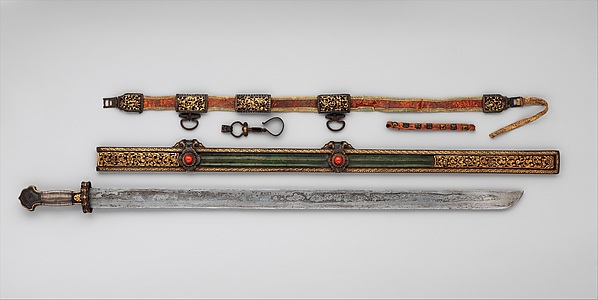
This specimen might be called a rapier on account of its acute point and elaborate hilt. But considering the stoutness of the blade, it is definitely a slasher as well. I would call it a "longsword" for game purposes
European single-edged swords like this are properly called falchions. There are very few extant falchions because they were so popular with soldiers that they tended to get used up.

Bastard/hand-and-a-half/Longsword
Swords which are long enough that they are slightly unwieldy in one hand, but rather quick and agile in two.
In the rules, they are always called bastard swords. But if you talk to a fencer or re-enactor, they will be called Longswords. The Longsword is also the runner-up to the Katana in "weapon most tainted by its fanboys." Swords like these were capable of extreme versatility, and could even be used effectively against an armored foe. Here is an illustration from the Talhoffer manual
Take a look at this German longsword the met W. 3 lb. 7 oz. (1560 g); L. 49 1/8 in. (124.8 cm); L. of blade, 38 1/2 in. It is quite elegant, with a narrow blade which emphasizes the thrust. But the length and the trigonometry of the pommel being so far back from the hilt render it somewhat awkward for a single-handed grip.
Compare it to this reproduction, which has a broader, choppier sort of blade, but is only still a little over 3lbs. It's not the amount of metal. It's the distribution of the metal.

And Katana? I guess the internet's most over-rated weapon could be counted as a bastard sword or a broadsword, depending on the size of the user in relation to the weapon.
Two handed swords are just that. Swords which cannot be effectively used with one hand (except for the occasional lucky shot) They are really only of limited utility since you are not likely to carry one everywhere (and they just weigh you down in narrow dungeon corridors) Two-handers are useful against horsemen, or often carried by bodyguards. They allow a single combatant to cover a relatively large area, and hold ground or fight defensively
This Italian 2-hander from the Met. is 6lbs, 2oz and about 66 inches in length.
An over-sized katana is called an odachi, or no-dachi. Here is one in Kurosawa's Seven Samurai.
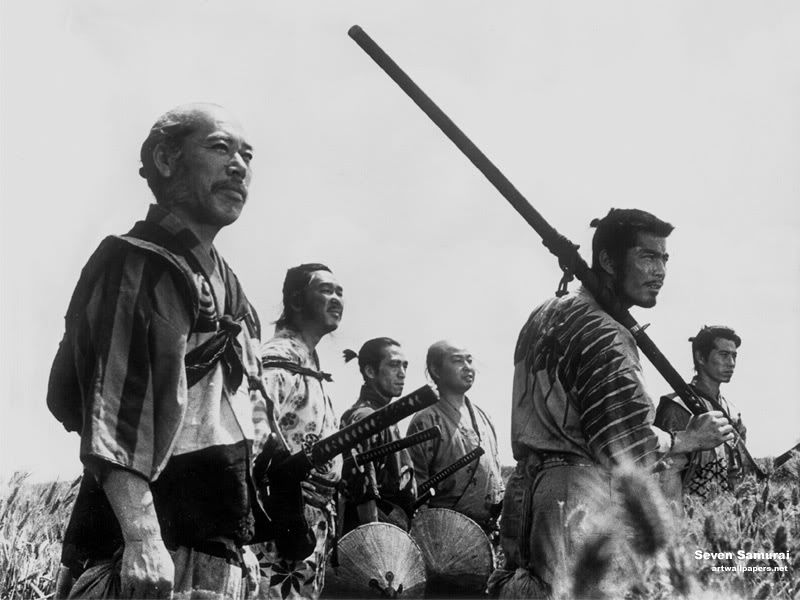
Obligatory Claymore
And if someone asks to use a buster sword in your game, just slap that idiot and send them on their way.
"Scimitars"
Another one of those very vague terms, "scimitar" seems to indicate nothing more specific than a single edged, probably curved sword. In the minds of western Europeans, curved swords were associated with Heathenism and Saracens, which is probably why it is on the Druid's weapon list.
In D&D 3E, it was introduced to indicate a light slashing weapon which depends upon finesse more than strength. For this intent, a Civil War cavalry saber would probably be too heavy for this category. But perhaps these would fit:
Swords like this; with the deeply curved blade and the forward-leaning lobe pommel are alternately called shamshirs, scimitars or mameluke sabers. They are designed as cavalry swords, but are quite nimble in the hand.In D&D 3E, it was introduced to indicate a light slashing weapon which depends upon finesse more than strength. For this intent, a Civil War cavalry saber would probably be too heavy for this category. But perhaps these would fit:
Or perhaps lighter variations of the yatagan. Many yatagan are rather thick-bladed though.
Or maybe something like this yanmaodao (goose-quill sword)
Rapiers
The term comes from the Spanish "espada ropera," meaning literally a clothing sword. Rapiers were originally meant to be relatively easy-to-carry weapons which you would wear with your everyday clothes, as opposed to full battle regalia. They were not designed to harm an armored opponent. George Silver, an Elizabethan English master, despised rapiers and said that they were too deadly for common brawling, and not deadly enough to be of use in service to the crown.
In game, they are counted as thrusting swords which are light enough that they do less damage, but depend on dexterity more than strength.
A prime example would be this American colonial small-sword, which was a development of the rapier. Smallswords typically have blades with a triangular cross-section. This effectively eliminated their cutting potential, but created a strong point which made nasty puncture-wounds.

Here is a more typical rapier. This specimen weighs 2 and a half pounds; slightly more than the broadsword above. Once again, it's not a matter of the amount of material, but the distribution of the material.
I would count other light , straight-bladed swords in the rapier category for game purposes. Such as this Jian which has a 29 inch blade and weighs two pounds.
Ugh. That was a hard post to put together! I think I'm actually sick of swords for once in my life. But there's more to come, I haven't even touched axes, spears, bludgeons or ranged weapons. And if you were disappointed by the constructive positivity of this post, don't worry! I am going to tear the armor rules a new one when I get around to it.
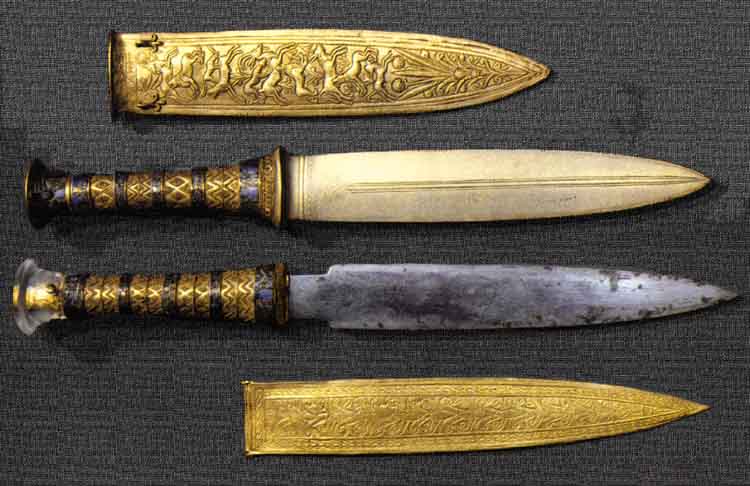

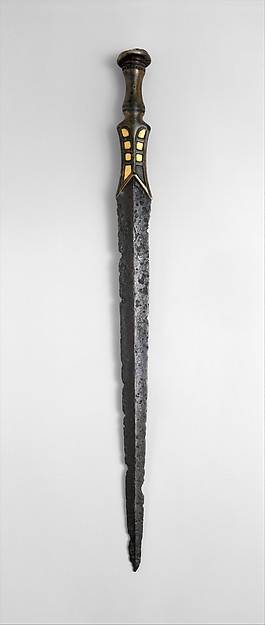
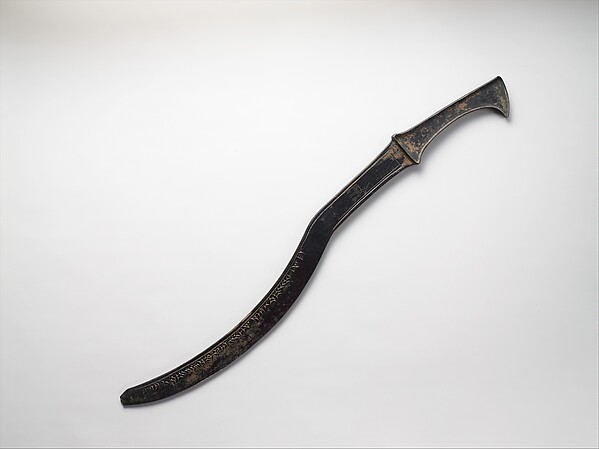



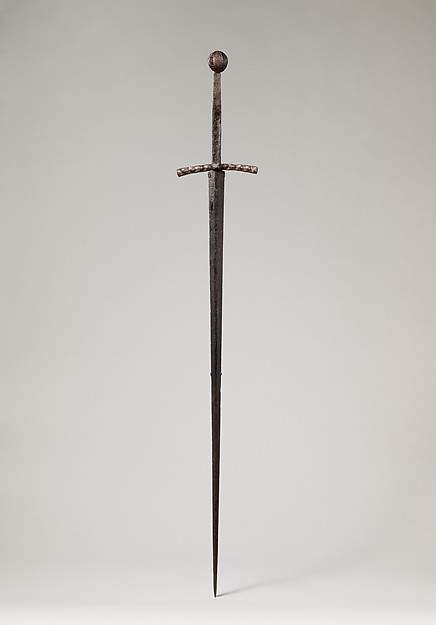







No comments:
Post a Comment